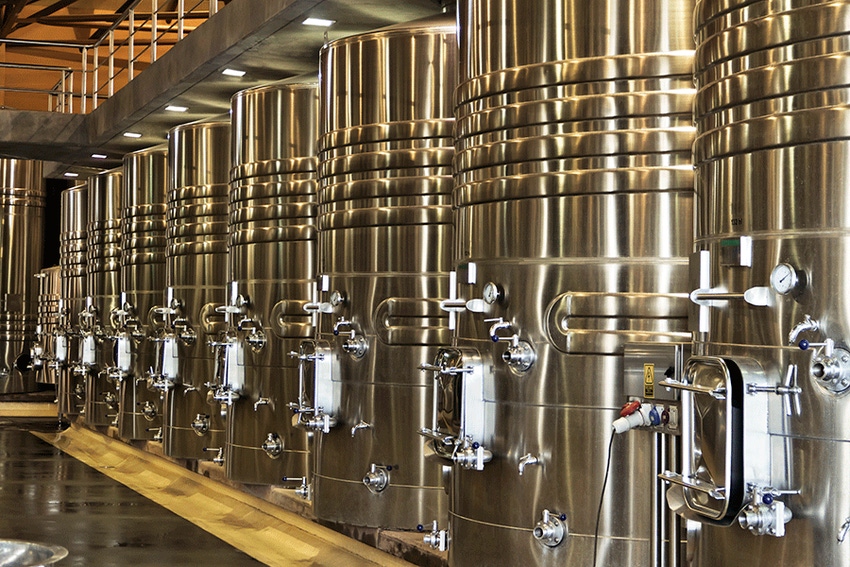
Spring rains and cool temperatures may have bought some time by slowing the development of grapes, but wine suppliers are still feeling pressure to clear tank space to make room for the upcoming harvest.
That’s because California wine in the bulk market is moving only in small increments, meaning it’ll take some time to work through the large inventory, according to a monthly report from the Ciatti Co., a San Rafael-based wine and grape brokerage firm.
In late spring, Ciatti received an uptick in requests from suppliers wishing to find buyers for wines to clear tank space ahead of the looming harvest and crush, or to generate cash flow, Robert Selby says in the company’s June report.
“It seems there is some pressure on trying to move wine before crush,” he writes. “This will only continue over the next two months, particularly as the 2018 crop is looking average-sized at worst. Sellers can offload small lots of wine at the current prices, but those wishing to move large volumes must consider discounting their price.”
OVERALL PRODUCTION FLATTENING
The latest report comes following experts’ predictions earlier for California’s overall wine production to flatten out at about 4.25 million tons a year statewide for the foreseeable future.
Weather extremes confounded growers this spring, with freeze damage to vines reported in some areas. Lynn Wunderlich, a University of California Cooperative Extension viticulture advisor based in Placerville, reported in a UCCE blog post, observations of variable frost damage in Viognier, Nebbiolo, Syrah, and Gamay grape varieties growing in El Dorado County.
A cool spell from late April through May brought some wind and rain to the coast and in the northern Central Valley, causing the growing season to run a bit behind where it would normally be, and behind last year’s pace, Selby notes in his report. Growers remained vigilant against mildew damage, which wasn’t a problem.
But summer heat can enable grapes to catch up quickly, he says. Indeed, grapes were “developing well” as a buildup of high pressure off the coast pushed temperatures into triple digits in Northern California’s interior areas the weekend of June 30-July 1, according to the National Agricultural Statistics Service office at Sacramento.
Selby notes that the Center for Wine Education at Oregon’s Linfield College forecasted a “strong chance for warmer than average conditions” in the western U.S. through August, indicating that 2018 is “highly likely” to finish near the five-year average for heat accumulation.
BULK WINE MOVEMENT SLOW
On California’s bulk market, wine has been moving every day and at good prices, but the movement has been slow, Selby says. Market uncertainties have been numerous. For instance, devaluation of the Argentinian peso in May “has made wine and grape juice concentrate from the country’s good-sized 2018 harvest more attractively priced,” according to a separate Ciatti Co. report focusing on global markets.
Argentina and Chile — which had an average size crush — are taking some trading customers away from South Africa, whose harvest was 15 percent smaller than last year, Selby notes in the global report.
Decent crops in South America eased what may have shaped up to be a global shortfall, but there is also evidence of softening prices. Suppliers in France, Spain, and Italy are “confronting the likelihood” that prices during the 2018-19 buying campaign will be lower than in the current one, and prices are already softening on some wines in Spain and Italy, according to Selby.
The 47-year-old Ciatti Co.’s monthly market reports can be viewed at http://www.ciatti.com/ciatti-reports
About the Author(s)
You May Also Like






